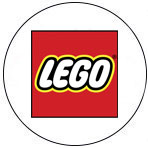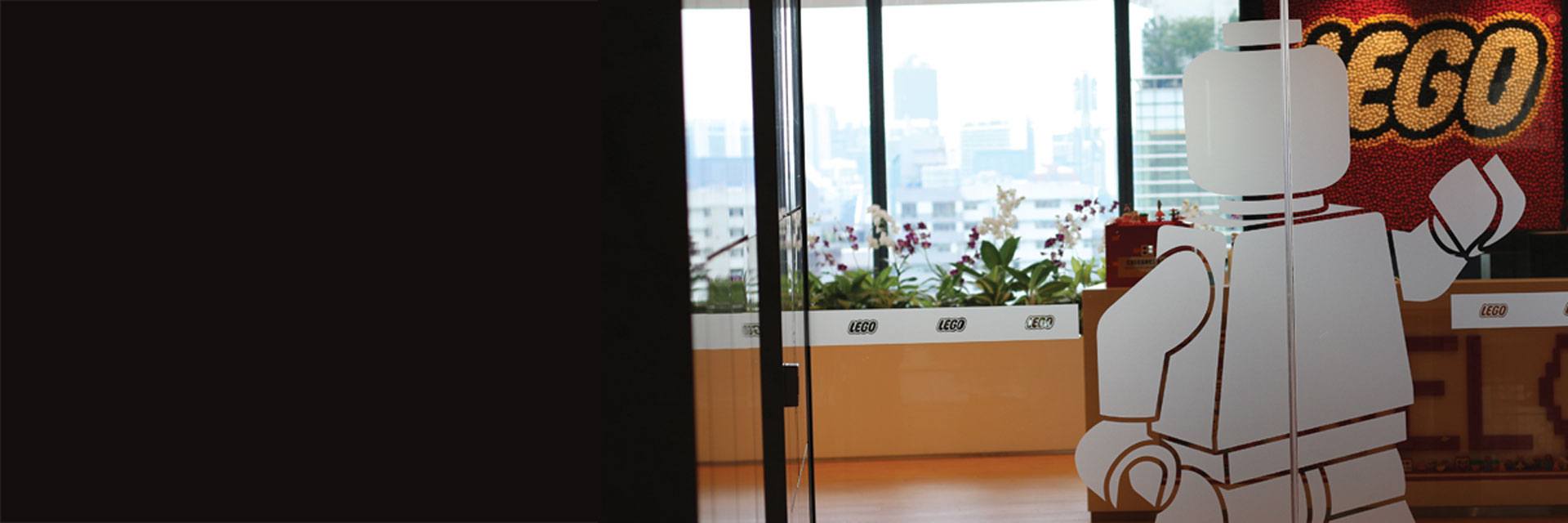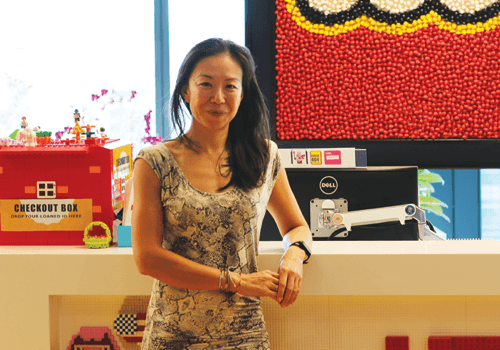
Lego, world famous makers of toy building bricks, declares that its mission is to ‘inspire and develop the builders of tomorrow’. It had this ethos front of mind when it began unveiling a state-of-the-art design concept for some of its major global offices.
Asia has been a key driver of growth for the Danish-headquartered corporation and, in 2015, it invested in the region with a bold new working environment for the 220 staff based in Singapore’s central Bay Area, following the concept introduced in 2014 at Lego’s London office.
In-keeping with Lego’s philosophy of creative play, the primary colours, sculptures and murals of the new offices seek – somewhat playfully – to reimagine the workplace, and free workers from the psychological and physical constraints of cubicle (or even open-plan) working.
Wide open space
There are no allocated offices – or individual desks. ‘Our offices are based around the concept of activity-based working, where the area you’re working in is dependent on the work you’re doing at that particular time – so there’s quiet spaces, meeting areas, phone booths and open spaces,’ explains Asia Pacific corporate counsel, Patricia Lee.
The idea of losing your personal space might sound daunting for some, and Lee was no exception, at first. ‘I had my doubts initially,’ she admits. ‘Going from having a corner office overlooking the harbour to no office at all sounded quite scary at the time!’
But the move to open spaces was part of a drive to revolutionise the way staff conceptualise their working day. According to senior vice president and head of Asia Pacific, Marko Ilincic, in line with its flat corporate structure, the company wants employees to consider the business as a whole rather than what is best for individual teams, and this conscious choice to foster a collaborative spirit gave rise to ‘activity-based working’.
What this actually means is that staff choose which of the building’s clearly delineated areas – quiet spaces, meeting areas, phone booths, open spaces – to work in, depending on the task at hand, moving around as appropriate.
For the legal team, this might entail spending one day with the marketing team, and the next with business development. This has had a tangible benefit for integration between the legal team and the business, says Lee. ‘It helps us to understand issues before they become problems, and enables our legal team to be proactive, while gaining a better understanding of the business as a whole.’
Technology is the key enabler throughout the office, with every working space ‘plug and play’. Lego staff members can take their laptops from space to space, connecting to screens and microphones in phone booths and work spaces, or work from their laptops directly in quiet areas. Communication is conducted through Skype, with a separate app used to locate where in the office anyone is working at any given time.
Nature or nurture
Whether or not playing with Lego building blocks as children has created a generation that is especially well disposed towards planning their own working environment as adults might be debatable. But Lee believes that activity-based working is particularly valuable for younger in-house counsel, and could be a talent draw.
‘You want to develop lawyers who are going to be a different generation of practitioners. If you’re going to put them in a cubicle and make them work like that, you’re not going to help them embrace technology and leverage the unique skillsets they possess,’ she says.
Patricia Lee
Asia Pacific corporate council
Lego
The office is certainly equipped with the latest technology and communication devices, and is kept uncluttered by its paperless spaces. All of which serve to open the minds of team members and facilitate cross-company dialogue. ‘I think you should create a space for the millennial workforce to use – an open, creative and collaborative space,’ says Lee.
For many, working environment is a representation of mindset, and it might be hard to imagine law firms freeing themselves from traditional structures, whether physical or conceptual. But Lee believes that this model, less restrictive than the standard office set-up, could be constructive for outside counsel too.
‘When we have lawyers come to visit the Lego office, particularly if they’re from private practice, I tell them that if they want to attract and recruit talent, if they want their staff to think creatively and collaboratively, you have to consider the way your office is set out and how you have your staff work,’ she says.
In any case, the in-house legal team at Lego is convinced. ‘Since moving here and seeing the benefits,’ says Lee, ‘I can’t imagine myself going back to a more traditional way of working.’

